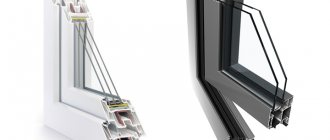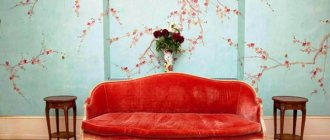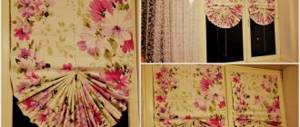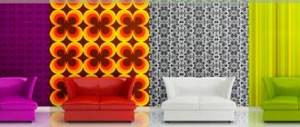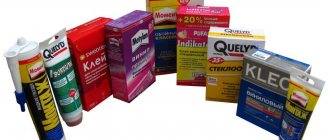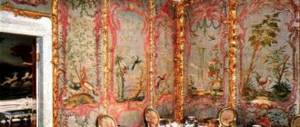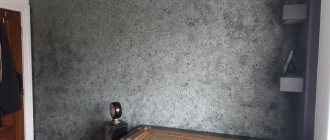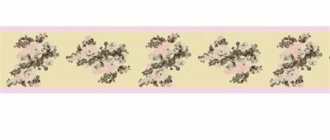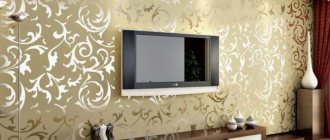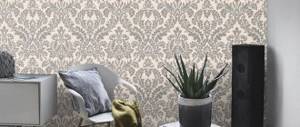Having made several renovations in the apartment, we think we know almost everything about it. But every time the question arises of how to choose wallpaper. From the article you will learn what types of wallpaper there are for walls and their characteristics.
Considering the fact that we will live with this choice for many years, wake up and go to bed in rooms with wallpaper on the walls that we ourselves preferred, we need to make this choice correctly and competently.
Related articles:
How to make a floor screed with your own hands step by step instructions.
How to plaster walls with your own hands for a beginner.
At the same time, it is important to take into account the functional purpose of each room and style, because rational use and exact compliance with the room will affect the service life and hygiene of the selected wallpaper.
You cannot glue paper wallpaper in a damp bathroom environment.
It is difficult to collect all types of wallpaper into a single classification. Can be divided by characteristics, for example:
- in terms of resistance to moisture - ordinary, moisture-resistant, washable;
- light or heavy depending on the density of the material;
- by pattern or surface structure.
Types of Wallpaper
Depending on the purpose, the following types of wallpaper for walls can be distinguished.
Paper
This type is made from thick paper, a special grade.
Depending on the method of processing the paper and applying a design to it, paper wallpaper can be:
- smooth;
- structural;
- embossed;
- photo wallpaper.
Paper ones are best for the bedroom and living room.
Washable
This type of wallpaper is two-layer. The first layer is made of non-woven fabric or paper, and the top layer is a polyvinyl chloride coating.
Therefore, washable wallpaper is also called vinyl. Their texture and method of applying patterns may also vary:
- silkscreen printing;
- structural (foam) vinyl;
- heavy vinyl;
- flat vinyl.
Moisture-resistant ones are suitable for the kitchen, bathroom and toilet. However, in places of high humidity, even they eventually come off at the joints and corners.
A varnish coating sometimes helps maintain durability.
Textile
They are also multi-layered. The top layer is made of fabric.
The fabric layer can be applied to various substrates:
- paper;
- fabric;
- synthetic.
Non-woven
Non-woven fabric is a paper-like cellulose material. Non-woven wallpaper, two-layer. The second layer is a polymer coating.
Liquid
This type is obtained by mixing an initially dry mixture with water, and then applying it to the walls, like putty.
Fiberglass
They are made of fiberglass and impregnated with a special composition.
Metal
They are made by applying a decorative coating of thin aluminum foil to porous paper.
A thin layer of non-conductive paint is applied over the foil, and a design or embossing is printed on the paint.
Metal wallpaper protects the room from electromagnetic radiation.
If you have little understanding of materials and the range of applications, then all the necessary information on a specific type can be read by the symbols on the wallpaper and their interpretation.
Vinyl wallpapers
Recently, along with traditional paper wallpaper, vinyl wallpaper, which appeared relatively recently, has become very popular. This wallpaper is formed from two layers - the bottom layer of paper (or fabric) is covered with a layer of polyvinyl, and then a pattern or embossing is applied to the surface. Foamed wallpaper, in which the top layer of vinyl has acquired an additional structure as a result of heat treatment, is denser and covers the wall surfaces well.
Another type of vinyl wallpaper - silk-screen - has silk threads in the top layer of vinyl. Most often, this type of wallpaper is dark-colored, smooth or embossed. This group of materials is united by increased decorativeness and resistance to light exposure. Significant strength, elasticity and water resistance of the top layer allow the use of vinyl wallpaper for covering premises that require frequent wet cleaning with the use of detergents, i.e. They are used for pasting kitchens, bathrooms, hallways, and halls.
Working with vinyl wallpaper, of course, is still difficult. Due to their significant thickness, vinyl wallpapers, which have a moisture-resistant vinyl layer, prevent the passage of excess moisture. In addition, they have a high coefficient of linear stretching; when glue is applied, they stretch greatly, and when dried, they shrink. As a result, the seams between the wallpaper panels may come apart. Vinyl wallpaper also does not tolerate changes in temperature and humidity very well.
But vinyl wallpaper is perhaps the most interesting type from a decorative point of view. The manufacturing technology of vinyl wallpaper allows you to create such a variety of coating options that this material can rightfully be considered multifaceted.
Types of wallpaper
In turn, depending on the manufacturing technology, there are the following types of wallpaper for walls:
Regular
This is a type of wallpaper made from paper on which a design can be printed. In conventional unprimed designs, the design is printed directly on paper, white or colored.
In primed designs, the design is applied to paper, the surface of which has already been pre-painted.
Background wallpapers do not have a pattern, but on embossed wallpapers the pattern stands out in relief.
Moisture resistant
They are printed with special ink containing waterproof polymers.
Sound-absorbing
This is paper-based wallpaper with a pile surface.
Textile wallpaper
Textile wallpaper is a paper sheet laminated with threads of natural or mixed fibers, or natural fabric. Their production technology consists of several processes:
- Formation of textile fabric. For this, various types of yarn or threads are used, consisting of natural (linen, cotton) or mixed fibers. The thread fabric can be formed from a different number of threads depending on their thickness and packing density. The number of threads ranges from 25 to 150 per 10 cm of paper web width;
- Forming wallpaper. The process consists of applying glue to a paper base and pressing it with a thread cloth;
- A drying process consisting of passing a paper web laminated with threads through 5-6 drying chambers using infrared radiation. The result of the drying process is a finally formed roll of wallpaper up to 1000 m long; cutting and packaging is the final stage at which the large roll is cut into standard (10.05 m long) or other lengths at the request of the customer.
Such wallpaper can be produced in various widths - from 53 to 80 cm. Textile wallpaper has increased heat-insulating and noise-absorbing properties, light resistance; This is an environmentally friendly product. This wallpaper belongs to the group of materials that do not burn easily, and materials containing flax fibers have bactericidal properties. Currently, wallpaper is produced from cotton, viscose and linen threads, as well as from threads containing natural and artificial fibers. The use of various threads makes it possible to provide any color scheme and, thus, satisfy the most sophisticated tastes of customers and the highest requirements of modern design. Synthetic-based textile wallpapers, which are textile fabric glued to foam rubber, are also produced.
A special type is velor wallpaper. They are paper sheets on which, during the production process, a pattern is first applied, and then velor fibers are applied. The result is a soft velvet surface.
Textile wallpaper is intended for covering walls and ceilings of office, residential and administrative premises in the usual way. They do not require adjustment to the pattern, which is a significant advantage over traditional paper ones. The unique texture of the fabric ensures that the strips are seamlessly connected to each other and imitate a continuous fabric surface.
Tips for choosing
Despite the modern abundance of all kinds of building materials, wallpaper remains one of the most common and widely used finishing materials.
Where absolute cleanliness must be maintained, in kitchens, dining rooms, toilets and bathrooms, it is better to use vinyl ones; they are easy to wipe or wash, and they will always be clean.
Foamed vinyl wallpaper can be used to cover walls in ventilated non-residential premises. They can only be used in the bedroom if they have an environmental safety symbol.
Beautiful silk-screen wallpaper can be used to decorate the walls of both non-residential and residential premises (the latter, only if there is an environmental safety symbol).
Types of paper wallpaper
Today there are two main groups of paper-based wallpapers - the so-called simplexes and duplexes. They differ in production technology and properties.
Simplex
Simplex with a floral pattern
Simplex is ordinary single-layer wallpaper that was used for pasting walls a century ago. Since then, their production technology has remained virtually unchanged. They consist of one layer of paper, one side of which acts as a substrate for applying the adhesive composition, and the other, the front side, is used for applying a decorative design using typographic printing.
True, in recent years two-layer simplexes have also appeared. They consist of two identical paper sheets glued together, front and inner. The result is dense wallpaper that is more resistant to mechanical stress.
Among the undeniable advantages of the simplex it should be noted:
- Wide range of colors and patterns. You can apply almost any design to a paper base and paint it in any shade. Dense two-layer simplexes can be embossed, resulting in a relief ornament.
- Excellent breathability. The porosity of the material does not prevent free gas exchange between the interior of the building and the outside atmosphere. As a result, normal levels of humidity and carbon dioxide concentration are maintained in living rooms.
- Low cost is a very important factor when the budget for repair work is limited. With the help of simplex wallpaper, you can completely renew the walls of your apartment very inexpensively.
The disadvantages of simplex wallpaper are:
- Fear of dampness makes wet cleaning of walls impossible. Paper easily absorbs moisture, as a result of which the wallpaper can become deformed and even peel off from the base of the wall.
- Low resistance to mechanical stress. During operation, simplex fabrics are easily torn, scratched, and abraded. As a result, paper wallpaper has a short service life.
- Fast fading. In the sun, under the influence of ultraviolet radiation, paper wallpaper quickly loses its original color saturation.
- The need for careful preparation of the base, since simplex canvases are thin, they cannot hide wall defects. Even the smallest surface imperfections: dents and bumps will appear on the wallpaper.
Duplex
Duplex wallpaper is a two-layer design. One canvas is glued to another, which significantly increases their density and strength. Unlike two-layer simplexes, in the production of duplexes, canvases with different technical characteristics are used, which makes it possible to improve their quality due to the rational use of material. The outer side is made of a stronger and denser sheet that can better withstand external physical influences. For the inner layer, paper with higher adhesion rates to the base wall is used.
Both flat designs can be applied to duplexes using a typographic method, as well as relief ornaments using the embossing method.
The advantages of these types of wallpaper:
- Increased resistance to ultraviolet radiation. Duplexes can be used to cover sunny rooms without fear of the material fading quickly.
- Leveling out minor wall defects. Thanks to their denser structure, duplex wallpaper can hide minor flaws in load-bearing surfaces.
- High resistance to physical damage makes duplex wallpaper more durable.
Duplex with patterned embossing
Like all finishing materials, duplex canvases also have their disadvantages:
- Higher cost. Compared to simplex canvases, covering an apartment with two-layer paper wallpaper will cost much more.
- Compared to other types (vinyl, non-woven wallpaper), duplex canvases are less durable in use.
Duplex canvases can have several varieties, differing in their purpose.
- Paintable wallpaper. They differ from the usual duplex in white color and relief embossing. They can be repeatedly painted in any color using various paints and varnishes.
- Structural wallpaper. They are made by embossing using binder polymer compounds. Thanks to this, the canvas acquires a combined relief-smooth surface.
- Coarse fibrous. Their production uses crushed wood shavings, which fill the space between two sheets. The result is an original textured pattern.
- Moisture resistant. The outer wallpaper sheet of such duplexes is treated with moisture-resistant impregnations. As a result, their resistance to dampness increases, and wet cleaning becomes possible.
For painting
Wallpaper for further coloring is usually produced in white. They allow you to hide uneven walls or give them relief. They either consist of several layers of paper or are based on non-woven fabric.
Immediately before applying the dye, they do not need a primer, and the painting itself should be done in several layers and only after the wallpaper has dried.
Finishing with decorative tiles: which one to choose and how to use
Finishing with decorative tiles: photos and prices of the MixturroMosaico salon
As for paints, the best option would be acrylic dyes, which are used to paint the ceiling. When purchasing in a store, consultants will help you choose a color to give the paint the desired shade.
